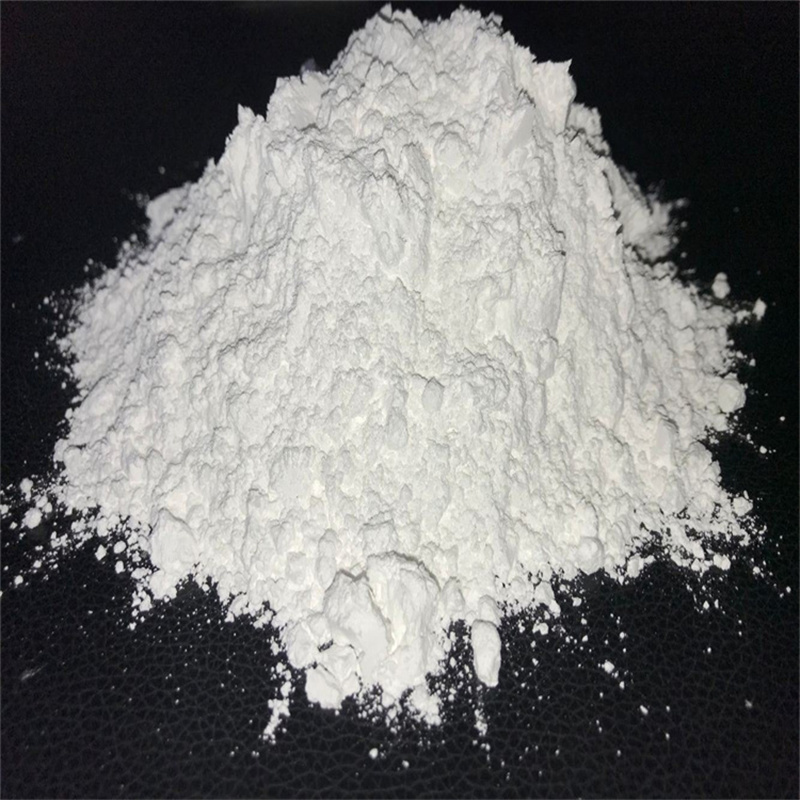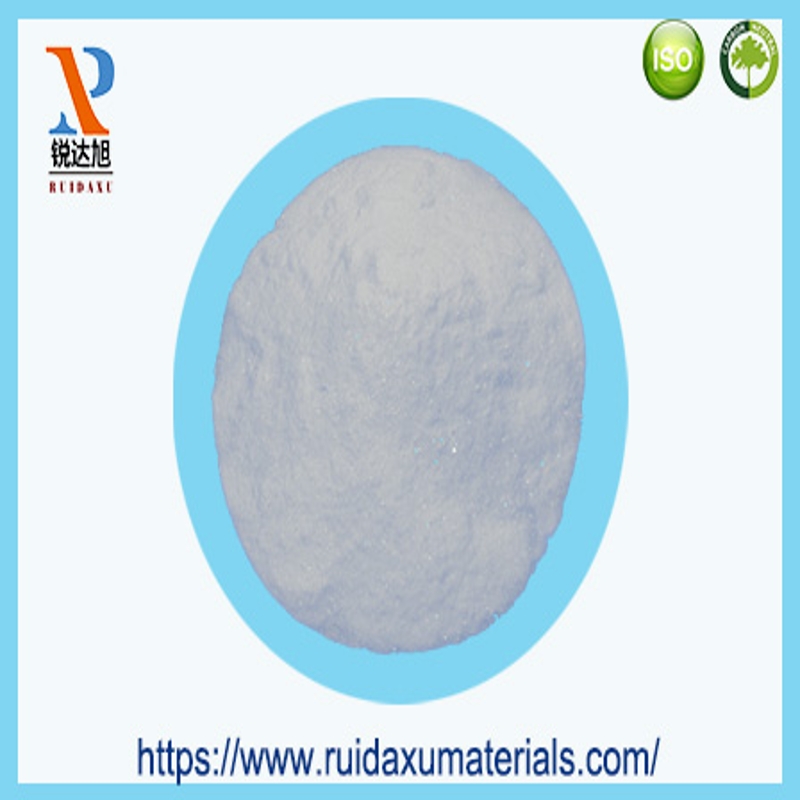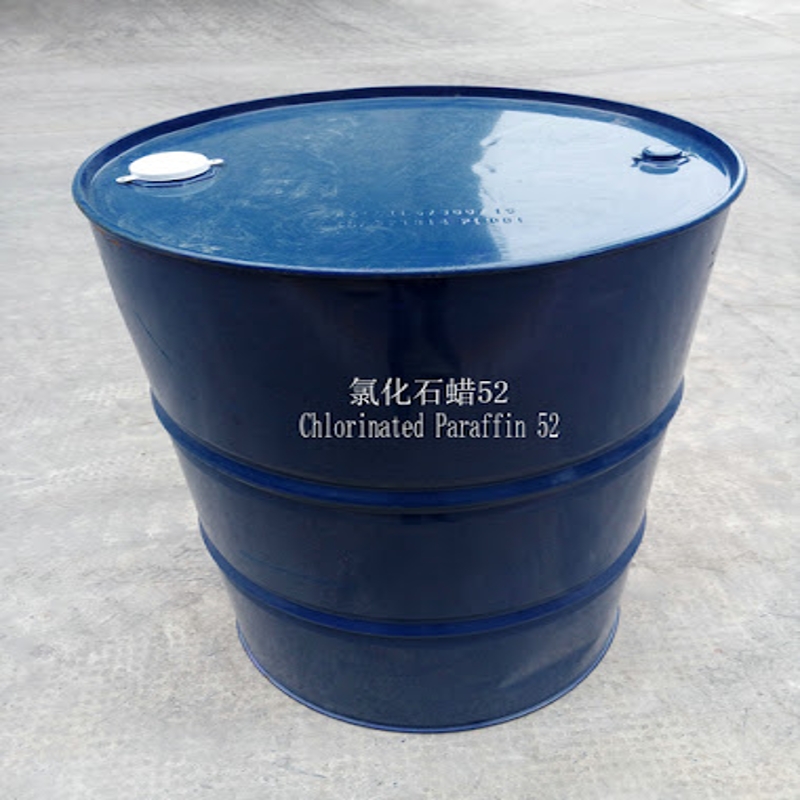Study on the dispersion performance of titanium dioxide.
-
Last Update: 2020-09-19
-
Source: Internet
-
Author: User
Search more information of high quality chemicals, good prices and reliable suppliers, visit
www.echemi.com
0 Foreword
Titanium dioxide is mainly used in paper, ink, plastic, coatings and other industries, in the process of use of titanium dioxide performance requirements are more stringent, especially the dispersion of titanium dioxide performance, the application system pays special attention to it. If the dispersion performance of titanium dioxide is poor, can not fully reflect the high whiteness of titanium dioxide, high cover and other properties, in the coating will affect the overall dispersion effect, serious even lead to the coating contains particles, precipitation and so on. Through various control means, improve the dispersion of titanium dioxide, not only conducive to titanium dioxide manufacturers, but also conducive to the downstream industry quality control.
At present, there are few studies on the dispersion performance of titanium dioxide at home and abroad, most of them stay in the laboratory stage, have very little guiding effect on production, and there is very little research on the dispersion factor, and there is no systematic discussion on its dispersion, and its effect has not been clearly defined. In this paper, a systematic experiment is carried out on the dispersion effect and influence factors of titanium dioxide in the water-based system, which provides scientific basis for the production and application of the product.1 Experimental materials and methods
1.1 experimental materials
This experimental material is mainly titanium dioxide, according to different factors to choose the corresponding nature of titanium dioxide raw materials, the water used for deionized water, pH adjustment agent selected 0.1 mol /L sulfuric acid and sodium hydroxide solution, the dispersant involved in the selection of pure analysis, and the use of deionized water to be made into 0.1mol/L. Other equipments include pH meters, fluorescence spectrometers, granularity spreaders, viscosity meters, etc.
1.2 Experimental step
(1) Takes the appropriate amount of titanium dioxide into 5 parts, crushes it at different times on the airflow shredder, makes a difference in its granularity, and then separates the five servings of titanium dioxide into a solution of 700 g/L, which is fully dispersed to measure the viscosity and record it.
(2) take 8 parts of titanium dioxide with different content, test the ingredients of their products, and then the 8 parts of titanium dioxide are made into a solution of 700 g/L, fully dispersed to measure viscosity and record.
(3) take 10 deionized water, respectively, with sulfuric acid solution and sodium hydroxide solution to make pH value of 2, 3, 4 ... 11 solution, keep its total volume the same, and then add the same mass of titanium dioxide powder to make 700g/L solution, fully dispersed to measure viscosity and record.
(4) take 9 copies of the same titanium dioxide powder with a concentration of 700 g/L of titanium dioxide solution, respectively, added sodium silicate dispersant, the addition is 0.05%, 0.10%, 0 .15%, 0.20%, 0.25%, 0.30%, 0.35%, 0.40%, and make a blank control, fully dispersed to measure viscosity and record.2 Experimental Results
2.1-particle experiment
After the titanium dioxide was crushed by airflow, its particle size decreased with the extension of the crushing time, and the particle size distribution of the product was tested, the results of which are shown in Figure 1.the above five titanium dioxide powders were made into a solution of the same concentration, as shown in Figure 2.can be seen from Figure 1, the particle size distribution of sample 1 to sample 5 gradually widens, and the peak particle size gradually increases, so the average particle size of sample 1 to sample 5 gradually becomes large. As can be seen from Figure 2, the viscosity of titanium dioxide is positively related to the particle size of the product, that is, the greater the granularity of the product, the greater the viscosity, the worse the dispersion. Sample 1 and sample 2 of the viscosity difference is small, from sample 3 after the product viscosity increased faster, which shows that in the case of smaller particle size of the product dispersion difference is small, with the increase of product granularity, the difference of dispersion gradually appeared, and exponential increase.
2.2 Titanium-containing experiments
The substance with the highest content in titanium dioxide white powder is titanium dioxide, with a maximum content of 99%, and the usually pigment-grade titanium dioxide content is 85% to 95%. Titanium dioxide content is one of the main indicators of titanium dioxide, the higher the titanium content, the better the whiteness performance of titanium white powder, but the higher the corresponding cost, different application systems have different requirements for titanium content. The different titanium-containing titanium dioxide was tested and then dissographed into a solution of the same concentration, and the viscosity was measured after full dispersion, the results of which are shown in Figure 3.can be seen from Figure 3, with the increase of titanium content, the viscosity of the product appears to decline, that is, the higher the content of titanium dioxide in titanium dioxide, the better the dispersion of the product. When the content of titanium in the product is less than 90%, the change in the viscosity of the product is larger, and when the content of titanium increases to more than 90%, the change is small, therefore, although the high titanium dioxide content to a certain extent has the benefit of improving product dispersion, but when the titanium content rises to more than 90%, its lifting effect is not obvious.
2.3 pH experiment
in the application of titanium dioxide, titanium dioxide is often placed at different pH to disperse, such as in the papermaking process will be titanium white powder dispersed in alkaline environment, and latex paint system also has titanium white powder dispersed in the weak acidic environment. The same titanium dioxide was placed in different pH values, the viscosity was measured at the same concentration of the water-based system, and the results were shown in Figure 4.From Figure 4, it can be seen that the pH value and the viscosity of titanium dioxide at the same concentration is "U"-type relationship, that is, in the strong acid and strong alkali environment titanium white powder dispersion is very poor, in the moderate alkalinity of titanium white powder dispersion is better. The titanium white powder shows excellent dispersion effect at pH of 5.2, and as the pH increases, the viscosity increases very quickly, and when the pH increases to 12, the viscosity is close to 1,900 mPa. s. In a highly acidic environment, the dispersion of titanium dioxide is better than that of a strong alkaline environment, and the viscosity is only 508 mPa when the pH is 4.2. s. Therefore, titanium white powder is better than alkaline environment dispersion under acidic conditions, especially in weak acidic environment.
2.4 Dispersant Experiment
Dispersant is an important means to improve dispersion performance, the dispersants commonly used in the titanium dioxide industry are sodium hexaphosphate, sodium silicate, etc., according to different occasions to choose to use. Figure 5 shows the effect of sodium silicate on dispersion performance with sodium silicate as a dispersant.From Figure 5, it can be seen that the addition of dispersant can effectively reduce the viscosity of titanium dioxide, improve dispersion performance, especially when the dispersant addition within 0.2% can quickly reduce the viscosity, when the dispersant addition continues to increase, the range of the decrease in viscosity decreased, the effect is not obvious. This is mainly due to the dispersant of about 0.2% sufficient to disperse 700 g/L of titanium dioxide, and further increase of the dispersant will not further enhance the dispersion effect.3
the following dispersion can be summarized by studying the above experiments.
(1) the dispersion process of titanium dioxide is the process of turning large particles into small particles, when the particles of titanium dioxide are small enough, is the moment of better dispersion performance. Titanium white powder particles are large, its dispersion requires a certain amount of external force to turn large particles into small particles, these external forces include admissive power, solubility, molecular hydrogen bonds, and so on, and these external forces and particle size is directly related, the larger the particles, the greater the external force required, in the same case the dispersion performance of large particles is worse.
the content of titanium in titanium dioxide is one of the important indicators, titanium can show more performance, one of which is hydro-hydro. Titanium has more unsaturated bonds on the surface, and water molecules can form more hydrogen bonds to produce titanium hydrates. The presence of this substance can enhance the affinity between titanium dioxide and water, thereby increasing the dispersion of titanium dioxide.
(3) When the pH value changes in the titanium dioxide system, in fact, it changes the potential value of the system, and the titanium white powder itself has a certain Zeta potential, when the potential in the solution is in line with the Zeta potential of the titanium white powder itself, the dispersion performance of the titanium white powder is enhanced, which is the result of mutual electron rejection. When the two possibilities are the same, a greater repulsion is generated, which makes the water molecules and titanium dioxide molecules mutually exclusive, and the two have the tendency to stay away, thus increasing the spacing between the two and realizing dispersion in the mixing system. the addition of
(4) dispersants can change the electrical properties of the various collections in the solution, such as anion dispersants, can make the molecular surface of the solution load negative electricity, so as to achieve dispersion under the action of rebuke, and when the dispersant adds too much, the substance with negative charge will produce a reunion, so that the particles become large, the dispersion effect is not obvious. 4 on production
The study on the dispersion performance of titanium dioxide is aimed at strengthening the production of titanium dioxide, which has the following guiding effect on production.
(1) the particle size of titanium dioxide is an important parameter affecting the dispersion performance, in the production to minimize the particle size of titanium dioxide, the main practice is to control the hydrolyzed particle size of titanium dioxide production, strengthen the sanding strength of titanium white powder rough, increase the strength of steam when the titanium white powder air flow is crushed, especially the strength of airflow crushing, it is the last process of titanium white powder crushing process, the crushing effect is directly related to the quality of the product.
(2) the increase in titanium content will increase the cost of titanium dioxide, but also to enhance the dispersion of the product performance, in these two aspects need to find a balance point, the general pigment has titanium dioxide content can be controlled at 90% to 94%, too much or too little will have a negative impact on the quality and cost of the product.
(3) pH value in production is also an important control index, especially in the process of titanium white coating film, its final coating pH is the product's pH, through the study of dispersion performance factors can be known, in the environment of weak acidity can get a better dispersion effect, so in the coating process is best to choose weak acid coating end point as the end point of the product.
(4) dispersant is an important raw material for the production of titanium dioxide, especially in the sanding process, controlling the addition is an important means to improve the dispersion performance, with the increase of product concentration can appropriately increase the addition of dispersants, so as to ensure that the product is in a good dispersion environment. In addition, the addition of dispersants is also necessary when the product is applied, but to ensure that the addition of dispersants in moderation. .
This article is an English version of an article which is originally in the Chinese language on echemi.com and is provided for information purposes only.
This website makes no representation or warranty of any kind, either expressed or implied, as to the accuracy, completeness ownership or reliability of
the article or any translations thereof. If you have any concerns or complaints relating to the article, please send an email, providing a detailed
description of the concern or complaint, to
service@echemi.com. A staff member will contact you within 5 working days. Once verified, infringing content
will be removed immediately.







